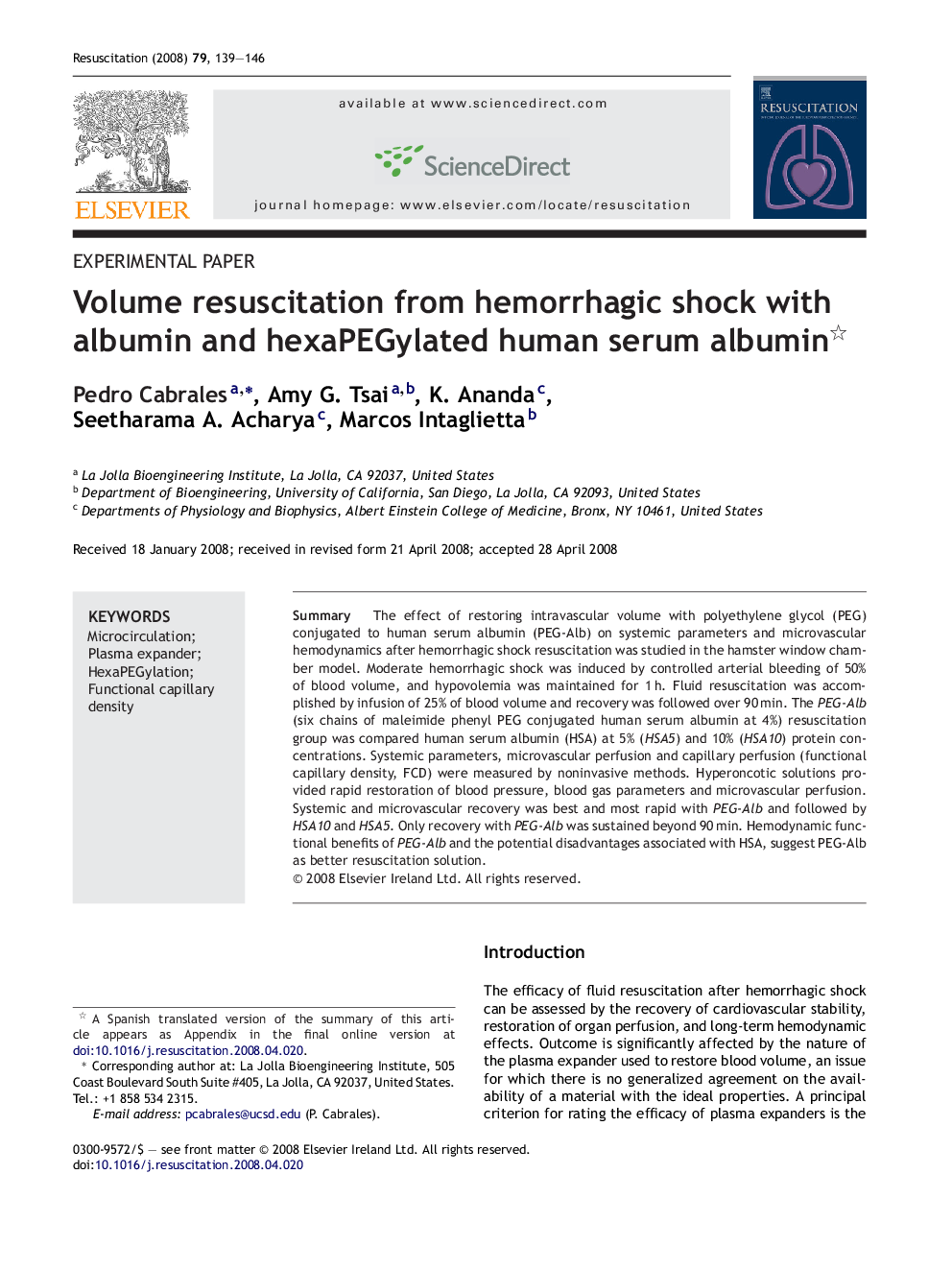| Article ID | Journal | Published Year | Pages | File Type |
|---|---|---|---|---|
| 3009556 | Resuscitation | 2008 | 8 Pages |
SummaryThe effect of restoring intravascular volume with polyethylene glycol (PEG) conjugated to human serum albumin (PEG-Alb) on systemic parameters and microvascular hemodynamics after hemorrhagic shock resuscitation was studied in the hamster window chamber model. Moderate hemorrhagic shock was induced by controlled arterial bleeding of 50% of blood volume, and hypovolemia was maintained for 1 h. Fluid resuscitation was accomplished by infusion of 25% of blood volume and recovery was followed over 90 min. The PEG-Alb (six chains of maleimide phenyl PEG conjugated human serum albumin at 4%) resuscitation group was compared human serum albumin (HSA) at 5% (HSA5) and 10% (HSA10) protein concentrations. Systemic parameters, microvascular perfusion and capillary perfusion (functional capillary density, FCD) were measured by noninvasive methods. Hyperoncotic solutions provided rapid restoration of blood pressure, blood gas parameters and microvascular perfusion. Systemic and microvascular recovery was best and most rapid with PEG-Alb and followed by HSA10 and HSA5. Only recovery with PEG-Alb was sustained beyond 90 min. Hemodynamic functional benefits of PEG-Alb and the potential disadvantages associated with HSA, suggest PEG-Alb as better resuscitation solution.
